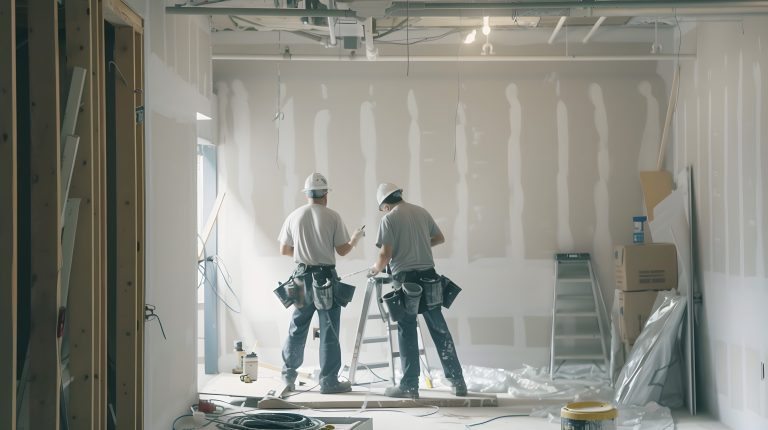Imagine what a gorgeous addition a lush, green, healthy yard would be to your home – it would be fantastic for you to enjoy, but it might also even boost the value, that’s how powerful it is. Your yard can be turned into a brilliant space for relaxation, recreation, and just for simply connecting with nature, and there’s nothing wrong with that (in fact, there’s a lot right with it). Of course, keeping your yard beautiful and inviting, not to mention clean and green, takes more than just sometimes mowing the lawn when it gets a bit long or watering your plants from time to time, but the good news is that once you learn what you can do, you’ll find it’s an enjoyable and easy way to make your entire home look and feel incredible. With that in mind, keep reading to discover some of the simple steps to a greener and cleaner yard. Focus On Healthy Soil If you want a lush, healthy yard, you’re going to need to have healthy soil – that’s really the foundation of everything when it comes down to it. The right soil gives your plants and lawn the nutrients they need to grow strong and gorgeous, and it’s wise to start things off by testing the pH of your soil and to find out what nutrients are in it. It’s not as hard as it sounds because you can buy home testing kits to help you, and once you’ve got the results, you’ll be able to move on to the next steps. When you know what it is your soil needs to make it as good as possible for your plants, you can add specialist compost or fertiliser, for example – you can even make your own compost if you prefer, and in fact, that’s an excellent way to have a more eco-friendly garden. To make compost yourself, you just need to find a spare spot in your yard and use a container of some kind (either a specially designed compost bin or a barrel, for example) where you can place all your organic waste. Over time, it’ll break down into nutrient-packed compost for you to use on your garden without any food waste in your home. Water Properly Water is vital if you want a healthy, good-looking yard, otherwise you’re going to be left with dead and dying plants and a brown lawn in the worst cases. Yes, it’s true that rain will do some of the work for you, but in most areas that’s not enough, and you’ll need to step in to keep things growing well – but watering the garden isn’t quite as simple a task as you might have thought, and there are some important things to consider to ensure you keep everything healthy. One thing to bear in mind if you want to water wisely is that you shouldn’t actually water every day, even if that seems to be the right thing to do. Instead, you should aim for a deep soak two or three times a week (and less than that if it’s raining). Why? It’s because this kind of water is much better for root growth, plus it means you can essentially ‘train’ your plants and lawn to be drought-resistant (up to a point, at least). It’s also crucial to water early in the morning or late in the evening as you’ll get less evaporation so the plants get more water. If possible, install a rain barrel to collect rainwater, and you can then use that for watering the garden, as that’s less wasteful and better for the environment, helping you tick another point off the list for making a clean and green yard. Choose Native Plants Native plants are a brilliant idea for any yard, and they should always be the first thing you think of when you’re wondering what you should plant (not only are they better for the environment and the garden – which we’ll get into shortly – but when you only want native plants, it’s going to narrow down your choice. That’s a good thing in this situation because there are thousands of plants to choose from, and the more you can reduce your shortlist, the easier designing your backyard is going to be. The reason native plants are such a good idea is that they’ve adapted to your region’s climate, so they’re a lot more resilient to pests and drought. On top of that, they need a lot less maintenance, which means they use less water and less fertiliser (and similar products), which is good for the planet. Finally, native plants are great because they support the local ecosystem and provide food and shelter for pollinators like bees and butterflies. That’s why it’s such a good idea to mix native flowers, shrubs, and even trees with your grass when you’re designing your yard. Practice Lawn Pest Control Sadly, although some creatures that people often call pests are needed in the garden (the pollinators we mentioned above, for example), the real pests can actually wreak havoc on your lawn. The problem is that using chemical pesticides isn’t always such a good idea because of their impact on the environment, and that’s why it’s wise to explore a variety of lawn pest control solutions that can keep your yard protected and also not harm any of the insects the environment needs. Plus, this kind of lawn care is safe for pets and kids, so it’s definitely the right move to make. What you can do to make sure you’re getting this right is to look for reputable online sellers who can guide you towards the best lawn care options for your needs and budget. Make sure you read the instructions carefully before you start to use the treatments, and you should end up with a healthy, green, and pest-free lawn. Try Eco-Friendly Lawn Care On the subject of your lawn, keeping it pest-free is just one job, but there














